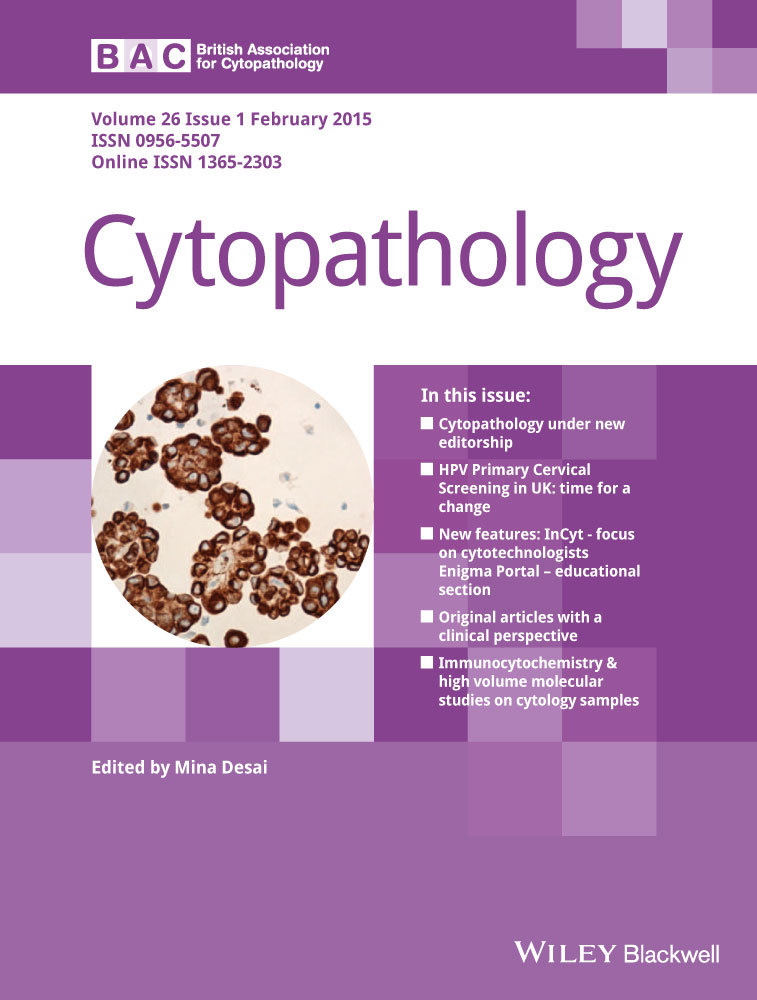Impression cytology diagnosis of ulcerative eyelid malignancy
Abstract
Objective
The utility of impression cytology in ocular diseases has predominantly been restricted to the diagnosis of dry eye, limbal stem cell deficiency and conjunctival neoplasias. Its role in malignant eyelid lesions remains largely unexplored. Although scrape cytology is more popular for cutaneous lesions, impression cytology, being non-traumatic, has an advantage in small and delicate areas such as the eyelid. The present study has been designed to evaluate its role in the diagnosis and management of malignant eyelid lesions.
Methods
Thirty-two histopathologically proven malignant eyelid lesions diagnosed over a 2-year period, including 13 basal cell carcinomas, 11 sebaceous carcinomas, four squamous cell carcinomas, two malignant melanomas and two poorly differentiated carcinomas, formed the study group.
Results
The results of impression cytology were compared with those of histopathology in the study group and with an age- and sex-matched group of benign cases as controls. The sensitivity of impression cytology was 84% (27/32) for the diagnosis of malignancy and 28% (9/32) for categorization of the type of malignancy.
Conclusions
Impression cytology is a simple, useful, non-invasive technique for the detection of malignant ulcerative eyelid lesions. It is especially useful as a follow-up technique for the detection of recurrences.




